Traffic Rules and Road Safety for German Driver's Licenses
Welcome to our comprehensive guide on traffic rules and road safety for German driver’s licenses. In this article, we provide you with essential information to navigate German roads safely. Understanding and following traffic rules is crucial for a smooth driving experience. Whether you’re a new driver or transitioning from driving in another country, this guide will help you grasp the key aspects of German traffic regulations. Let’s explore the road to safe and confident driving in Germany.
German Driver's License and Others for Sale
-
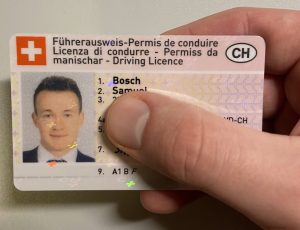 $775.00Rated 5.00 out of 5 based on 10 customer ratings
$775.00Rated 5.00 out of 5 based on 10 customer ratingsHaving a Swiss driver's license is essential for individuals who...
-
 $2,200.00Rated 5.00 out of 5 based on 4 customer ratings
$2,200.00Rated 5.00 out of 5 based on 4 customer ratingsGet behind the wheel with confidence - the Polish Driver's...
-
 $800.00Rated 5.00 out of 5 based on 6 customer ratings
$800.00Rated 5.00 out of 5 based on 6 customer ratingsBuy Norwegian Driver's online from the best producers on the...
-
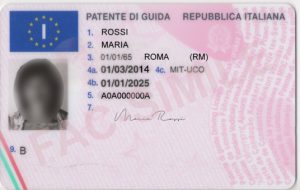 $800.00Rated 5.00 out of 5 based on 5 customer ratings
$800.00Rated 5.00 out of 5 based on 5 customer ratingsDrive the Italian way with confidence - the Italian Driver's...
-
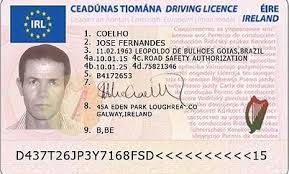 $850.00Rated 5.00 out of 5 based on 4 customer ratings
$850.00Rated 5.00 out of 5 based on 4 customer ratingsThe Irish Driver's License is your ticket to safe and...
-
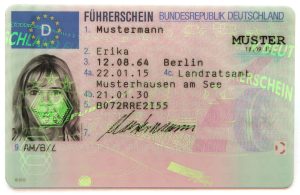 $850.00Rated 5.00 out of 5 based on 4 customer ratings
$850.00Rated 5.00 out of 5 based on 4 customer ratingsThe German driver's license is a highly-secure and government-issued document...
-
 $750.00Rated 5.00 out of 5 based on 2 customer ratings
$750.00Rated 5.00 out of 5 based on 2 customer ratingsGet on the road to freedom with the French driver's...
-
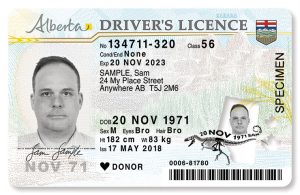 $850.00Rated 5.00 out of 5 based on 5 customer ratings
$850.00Rated 5.00 out of 5 based on 5 customer ratingsDrive with confidence and freedom with the Canadian driver's license...
-
 $850.00Rated 5.00 out of 5 based on 6 customer ratings
$850.00Rated 5.00 out of 5 based on 6 customer ratingsThe British driver's license is a secure and reliable document...
-
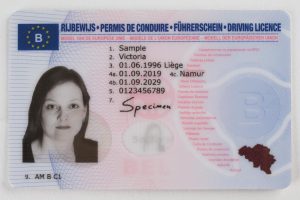 $750.00Rated 5.00 out of 5 based on 12 customer ratings
$750.00Rated 5.00 out of 5 based on 12 customer ratingsThe Belgian driver's license is a highly secure and reliable...
-
 $800.00Rated 5.00 out of 5 based on 7 customer ratings
$800.00Rated 5.00 out of 5 based on 7 customer ratingsThe Australian driver's license is a highly secure and reliable...
-
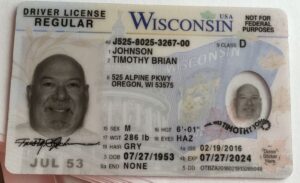 $800.00Rated 5.00 out of 5 based on 7 customer ratings
$800.00Rated 5.00 out of 5 based on 7 customer ratingsHigh-quality fake US driver's licenses, available in different states and...
German Traffic Rules and Regulations
Whether you’re a resident or a visitor, understanding and following these traffic rules is essential for a smooth driving experience. Let’s dive into the key aspects of German traffic rules and regulations:
- Driving License and Vehicle Requirements
- Valid Driving License:
To legally drive in Germany, you must possess a valid driving license. If you have an international driving permit (IDP), it is generally valid for up to six months. However, specific rules may vary depending on your home country. If you plan on staying in Germany long-term, you may need to apply for a German driving license. Check with local authorities or the German Federal Ministry of Transport for more information. - Vehicle Registration and Insurance:
Before hitting the roads in Germany, you must register your vehicle with the local vehicle registration office (Kraftfahrzeug-Zulassungsstelle). Additionally, make sure you have valid third-party liability insurance (Haftpflichtversicherung) to cover any damages caused to others in the event of an accident. It is strongly recommended to consider comprehensive insurance coverage for your own vehicle as well.
- Traffic Signs and Signals
- Understanding Traffic Signs:
Germany utilizes a comprehensive system of traffic signs to regulate and guide drivers. Familiarize yourself with the various signs, including speed limits, priority signs, parking restrictions, and warnings. Recognizing and understanding these signs is crucial for safe and lawful driving. Study the meanings of different signs and refer to the official German driving manual (Fahrschulbuch) for detailed explanations. - Traffic Signals and Lights:
Traffic signals play a vital role in controlling traffic flow in Germany. Red means stop, yellow indicates caution, and green allows you to proceed. Pay close attention to pedestrian traffic lights as well, especially when crossing intersections. Special signals, like arrows or flashing lights, may provide additional instructions or warnings. Always obey traffic signals to ensure your safety and the smooth operation of traffic.
- Speed Limits and Driving Behavior
- General Speed Limits:
Germany has different speed limits depending on the type of road. In urban areas, the default limit is typically 50 km/h unless otherwise indicated. On rural roads, the limit is usually 100 km/h, while on autobahns, some sections have no speed limit. However, it’s important to remember that even on unrestricted autobahn sections, driving at excessive speeds can be dangerous and may result in fines or penalties. Adjust your speed according to the road conditions and always prioritize safety. - Overtaking and Lane Discipline:
When overtaking other vehicles, use your indicators to signal your intention and ensure that you have a clear view of the road ahead. Return to the right lane after overtaking and maintain a safe following distance. It is important to respect other drivers and practice lane discipline, keeping to the right unless overtaking or when traffic conditions dictate otherwise.
- Right-of-Way and Priority Rules
- Right-of-Way at Intersections:
At intersections, always yield to vehicles already in the intersection or approaching from the right, unless otherwise indicated by priority signs or traffic lights. Remember to be cautious of pedestrians and cyclists who may also have the right-of-way in certain situations. When in doubt, exercise caution and yield to ensure safety. - Yielding to Emergency Vehicles:
When emergency vehicles, such as ambulances, fire trucks, or police cars, approach with flashing lights or sirens, stay calm and make way for them to pass. Safely pull over to the right and stop if necessary, allowing them to proceed without obstruction. Always be aware of emergency vehicle signals and respond promptly.
- Parking and Stopping Regulations
- Parking Zones and Restrictions:
In urban areas, parking is often regulated through different zones and parking signs. Pay attention to parking fees, time limitations, and any specific rules indicated on signs. Some cities employ resident-only parking zones or zones reserved for disabled individuals. Always park your vehicle legally and consider using designated parking garages to avoid fines or towing. - No-Stopping Zones and Bus Stops:
Stopping is strictly prohibited in designated areas such as bus stops, taxi stands, and emergency lanes. These areas are essential for the efficient flow of traffic and the safety of passengers. Observe and respect the no-stopping signs to maintain order and minimize disruptions.
- Driving under Special Circumstances
- Driving in Inclement Weather:
When driving in adverse weather conditions, adjust your driving behavior accordingly. Reduce your speed, increase the following distance, and use appropriate signals and headlights. Rain, snow, or fog can significantly affect visibility and road grip, so exercise caution and adapt your driving technique to ensure your safety and that of others. - Dealing with Roadworks:
Roadworks are common in Germany, and they often require lane closures or temporary traffic control measures. Follow the signs and instructions provided by road workers or traffic control devices. Reduce your speed, be patient, and merge early when necessary to ensure a smooth and safe traffic flow through work zones.
Road Safety Tips for New Drivers
As a new driver, the journey on the road can be both exciting and challenging. To ensure a safe and confident driving experience, it’s essential to prioritize road safety from the very beginning:
- Know and Follow Traffic Laws
- Familiarize Yourself with Traffic Rules:
Understanding and following traffic laws is essential for new drivers in Germany. Take the time to study the German traffic regulations, including speed limits, right-of-way rules, and traffic signs. This knowledge will help you navigate the roads safely and avoid penalties or fines. - Observe Speed Limits:
Respecting speed limits is crucial for your safety and the safety of others. Different road types have varying speed limits, so pay attention to signs indicating the maximum permissible speed. Adapting your speed to the posted limits ensures a smoother flow of traffic and reduces the risk of accidents.
- Develop Defensive Driving Skills
- Stay Alert and Avoid Distractions:
As a new driver, it’s crucial to stay focused on the road at all times. Avoid distractions such as using your mobile phone, eating, or engaging in other activities that take your attention away from driving. Your full attention should be on the road and your surroundings. - Practice Defensive Driving Techniques:
Defensive driving involves anticipating potential hazards and being prepared to react promptly. Maintain a safe following distance from the vehicle in front of you, consistently check your mirrors, and be mindful of other drivers’ actions. By practicing defensive driving, you can avoid accidents and contribute to overall road safety.
- Master Intersection Safety
- Understand Right-of-Way Rules:
Intersections can be complex, so it’s crucial to understand the right-of-way rules. Yield to vehicles already in the intersection or approaching from the right, unless otherwise indicated by priority signs or traffic lights. Always be cautious of pedestrians and cyclists who may have the right-of-way in certain situations. - Use Turn Signals:
Using turn signals is essential for communicating your intentions to other road users. Signal early and consistently, allowing ample time for other drivers to anticipate your moves. This promotes a smoother flow of traffic and reduces the risk of collisions.
- Stay Attentive in Challenging Conditions
- Adjust Driving in Inclement Weather:
Adapting your driving behavior to inclement weather conditions is crucial for your safety. Reduce your speed, increase the following distance, and use appropriate headlights and signals to ensure optimal visibility. Rain, snow, or fog can significantly affect road grip, so exercise caution and adjust your driving technique accordingly. - Be Cautious at Night:
Driving at night poses unique challenges due to reduced visibility. Ensure your headlights are properly adjusted and use high beams judiciously, being mindful of oncoming traffic. Stay alert for pedestrians and cyclists who may be less visible at night. Slowing down and staying attentive will help you navigate safely.
- Practice Parking and Maneuvering Skills
- Master Parking Techniques:
Parking can be challenging, especially in urban areas. Practice various parking techniques, such as parallel parking, perpendicular parking, and parking in tight spaces. Regular practice will improve your skills and boost your confidence when parking in different situations. - Safely Execute Turns and Lane Changes:
Before making turns or changing lanes, signal your intentions well in advance. Check your mirrors and blind spots to ensure there are no approaching vehicles. Execute turns and lane changes smoothly and confidently, maintaining awareness of other road users. Practicing these maneuvers will help you navigate traffic safely.
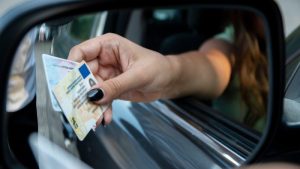
Understanding German Road Signs
Road signs serve as important visual cues that provide essential information and instructions to drivers:
- Overview of German Road Signs
- Importance of Road Signs:
Road signs are crucial visual aids that convey essential information to drivers. In Germany, road signs play a vital role in ensuring road safety, guiding traffic, and providing necessary instructions. They help drivers navigate unfamiliar routes, anticipate hazards, and comply with traffic rules. - Classification of Road Signs:
German road signs are categorized into three main types:
a. Regulatory Signs: These signs indicate traffic laws and regulations, including speed limits, parking restrictions, and right-of-way rules.
b. Warning Signs: Warning signs alert drivers to potential hazards ahead, such as sharp turns, slippery roads, or pedestrian crossings.
c. Informational Signs: Informational signs provide directions, distances, and information about nearby services like fuel stations, rest areas, and hospitals.
- Regulatory Signs
- Speed Limit Signs:
Speed limit signs are crucial for maintaining road safety. In Germany, speed limits are indicated by numbers inside a red circle. Different speed limits apply to various road types, such as Autobahn (expressways), urban areas, and residential zones. Adhering to these speed limits is essential to prevent accidents and ensure smooth traffic flow. - Priority Signs:
Priority signs determine right-of-way rules at intersections and junctions. They help drivers understand who has the right to proceed first. Priority signs may include “Stop” signs (a red octagon), “Give Way” signs (a downward-pointing triangle), or “Priority Road” signs (a yellow diamond). Following these signs promotes safe and efficient traffic flow.
- Warning Signs
- Hazard and Caution Signs:
Warning signs in Germany notify drivers of potential hazards ahead. These signs are often triangular with a red border and a black symbol or text indicating the specific hazard. Examples include signs for sharp curves, slippery roads, pedestrian crossings, or construction zones. Recognizing and heeding these signs allows drivers to adjust their speed and be prepared for potential dangers. - Pedestrian and Bicycle Signs:
Germany places a strong emphasis on protecting pedestrians and cyclists. Signs indicating pedestrian crossings, shared pathways, or bicycle lanes alert drivers to the presence of these vulnerable road users. These signs remind drivers to exercise caution, yield when necessary, and share the road responsibly.
- Informational Signs
- Directional Signs:
Directional signs provide information about routes, destinations, and distances. They help drivers navigate to specific locations smoothly. These signs typically feature arrows, place names, and distances to guide drivers in the right direction. Paying attention to directional signs ensures you stay on the correct route and reach your destination efficiently. - Service Signs:
Service signs indicate the availability of various facilities and services along the road. These signs may include symbols for fuel stations, rest areas, parking lots, hospitals, or tourist attractions. Recognizing service signs helps drivers plan their stops, refuel, take breaks, and access necessary amenities during their journey.
- Additional Considerations
- Language and Symbol Usage:
German road signs primarily use symbols to convey information, making them easily understandable regardless of language barriers. Familiarize yourself with common symbols to interpret signs accurately. Additionally, some signs may include supplementary text in German, but the symbols remain consistent across international standards. - International Variations:
While many German road signs align with international standards, there are specific signs unique to Germany. Understanding these variations is crucial, especially for drivers from other countries. Familiarize yourself with German road signs to navigate the roads confidently and comply with local traffic regulations.
Where to Buy a German Driver's License on the Dark Web
If you are looking to buy fake documents on the dark net, Darknetdocuments.com is known to provide the best novelty documents with very high quality which you won’t find anywhere else on the dark web. Contact us now for best deals through any of the following contact information
Conclusion
Understanding German traffic rules and prioritizing road safety is essential for all drivers holding a German driver’s license. By familiarizing yourself with traffic regulations, being mindful of road safety practices, and adopting a defensive driving mindset, you can confidently navigate the roads of Germany while ensuring the safety of yourself and others around you. Remember to always stay up-to-date with any changes in traffic laws and be proactive in enhancing your road safety knowledge. If you have any further questions or need additional guidance, please explore the other sections of our website or reach out to us directly. Safe travels and enjoy the journey on German roads!
Sources:
In order to come up with this beautiful peace of write up, we read and copied some contents from other amazing writers/bloggers. Below is a list of sources we used;
- https://www.expatrio.com/about-germany/driving-germany
- https://thefrankfurtedit.com/driving-in-germany-navigating-the-autobahn-and-beyond/
- https://www.welcome-center-germany.com/post/obtaining-a-drivers-license-in-germany
- https://www.greenflag.com/driving-in-europe/driving-advice/driving-in-germany
